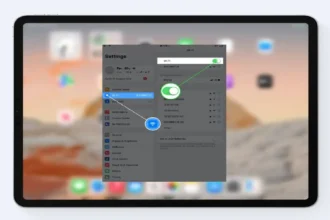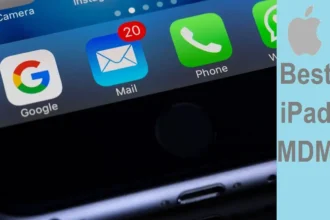Starbucks – is it just about the coffee place? Probably, it brings the feeling of coziness, your neighborhood, friendly chat, your favorite sitting by the window, inspiration for work – the list is endless. Mcdonalds – friends, family, home-like place anywhere in the world. Google – a “know-it-all” pal that satisfies our curiosity 24/7.
The list of world-famous brands can go on, and we all have something associated with the brand name as it evokes certain feelings and emotions; represents a particular philosophy and culture; creates invisible bonds with every customer. In layman’s terms, “brand” is the quintessence of values, the voice of the company, colors, behavior, communication, visual assets, etc.
Brand formation takes time and hundreds of failures while creating the unique name and the world it is going to represent. There is a common misconception among business newbies, that brand is about the name, logo, and slogan. However, it’s just a front side that leads to the realm of interconnected factors, which make the brand identity. Brands create loyal customers who keep coming back year after year, not having the intention to try something else.
How to coin a brand?
1. Target audience
Defining a target audience is the very first brick for your brand, as it defines the layer of society you want to reach. Your further work will evolve around the type of customers and their needs and they will make the backbone of the company. It is important to be specific rather than just try to influence as many people as you can, as they will make nothing but casual visitors.
The target audience requires proper observation:
- Examine your customers – age range, hobbies, life preferences, why they choose your products and services, etc.
- Watch the competitors – what is their range of influence, what they offer to the customers, and whether there are any uncovered spots in the list of services they offer.
- Create the avatar of the buyer- outline the profile of the customer- appearance, physical and psychological characteristics, and predictable behavior in certain situations.
2. Placement on the business scale
You need to define your distinctive niche and stick to it, outlining the main feature that will set you apart, the unique thing to differentiate you from others. Besides, it will also set the financial expectations to enter the market with– luxury, premium, or mass-market.
The niche is declared by using a specific tone for communication. If you are selling high-end products, your voice should be sophisticated and knowledgeable; the household products are about a warm and advisable tone; goods for kids – welcoming and playful, etc.
3. Name
Name is one more brick in the fundamental part of branding. It is something to remember the company by and to recognize among others; it’s the unified word for everything the customer needs. The name should be short and memorable, with no complex words.
A brand name will also define your URL address, thus, it’s highly recommended to purchase a domain name that creates a pleasant a smooth co-sound with the brand.

When you find it hard to come up with a name, there are a few options to help you:
- Descriptive names – describe the main purpose of the business, “chemist’s”, “butcher’s”, etc.
- Origin – contains the name of a person who produces or the territory of production.
- Emotion-evoking – inspire emotional responses – Freederm, Uber, etc.
- Compound names – combine the main words – Instagram, Facebook, FedEx, etc.
- Acronyms or initials – they help to remember the long words easier – Fiat, ASICS, NASA, etc.
4. Create a story
Just a name will not work if it doesn’t have a story that states why you decided to start the business in the first place. You need to be clear about the positive influence of your brand on the customers’ lives. The story communicates first, it’s important. You need to show that the product was created because people need it, and definitely not because you want to make good money.
A good story touches the mind and souls of the buyers and keeps them attached to your brand.
5. iOS-friendly Brand Management Apps
Brand management software provides businesses with an opportunity to develop their brand and manage workflow and design features. The owners of the iOS system will benefit greatly from software like Canva, NiceJob, BirdEye, Qualtricks Core XM, and Airtable which are top-rated among others due to their efficiency.
These apps give access to numerous functions:
- Create a visual basis for the brand: video and photo content, logos, slogans, etc.
- Library of visual templates for various platforms.
- Editing tools.
- Single storage of repository, with shared access for marketers and designers.
- Numerous insights into the efficiency of performance.
- Optimization of brand identity and customer experience.
The usage of specified software makes the whole branding process manageable and controlled. As the above-mentioned ‘helpers’ were created specifically for iOS users, they will prevent erroneous performance and provide seamless work.
6. Brand’s Logo
The logo should be simple yet meaningful as it will help the company stand out from the crowd. When the customers see the sign somewhere on the van or the packaging, they will instantly recognize the brand, which will be evoking a certain portion of feelings.
If the ideas for a logo keep ignoring you, use iOS-friendly apps like Canva or Vista Create for some inspiration, as they share various templates to choose from.
6. Brand’s Look
The look is defined by the colors, fonts, and images:
- Colors have a psychological influence on people, so it’s important to choose the ones that relate to the mood and tone of voice of the company;
- Fonts can look strict and authoritative, or joyous and welcoming. Everything depends on your vision.
- Images must all have top-notch quality. Define the main images that convey the philosophy of your brand.
If your brand is connected to some kind of public service, its style should also influence corporate clothing, to make everything united and interconnected.
7. Slogan
“I’m lovin’ it” – simple and recognizable, isn’t it? Slogans aren’t obligatory, however, they provide another element of recognition. Slogans can be motivational like Nike (“Just do it”), metaphoric (“Redbull gives you wings”), symbolic (L’Oreal “Because you’re worth it”), etc. Slogans must resonate with the company’s tone of voice and overall style. If it doesn’t complement the whole picture, better avoid it.
8. Marketing
Use your brand everywhere, and make it visible. The best way to build brand awareness is by using it for social media. You can build the line of your product, post images that represent your brand, and write useful posts to encourage people to share them, and thus, attract more attention to your brand.
Advertising campaigns, email newsletters, podcasts, and video content – every time you appear on the screen, make sure there’s a logo as well. Keep all your post organized, and plan and schedule them with Buffer, Planoly, Apphi, etc. This is the best way to keep everything under control.
Creating a brand is a ‘must’ for those who plan to have a long-term game, as it will always direct the ideas for development. By having a brand and its story you connect with the emotional perception of the customer, turning them into brand evangelists, people who popularize your services and goods, spreading the word of mouth around the world. Regular businesses come and go, and brands come and stay – you are to choose the purpose.





